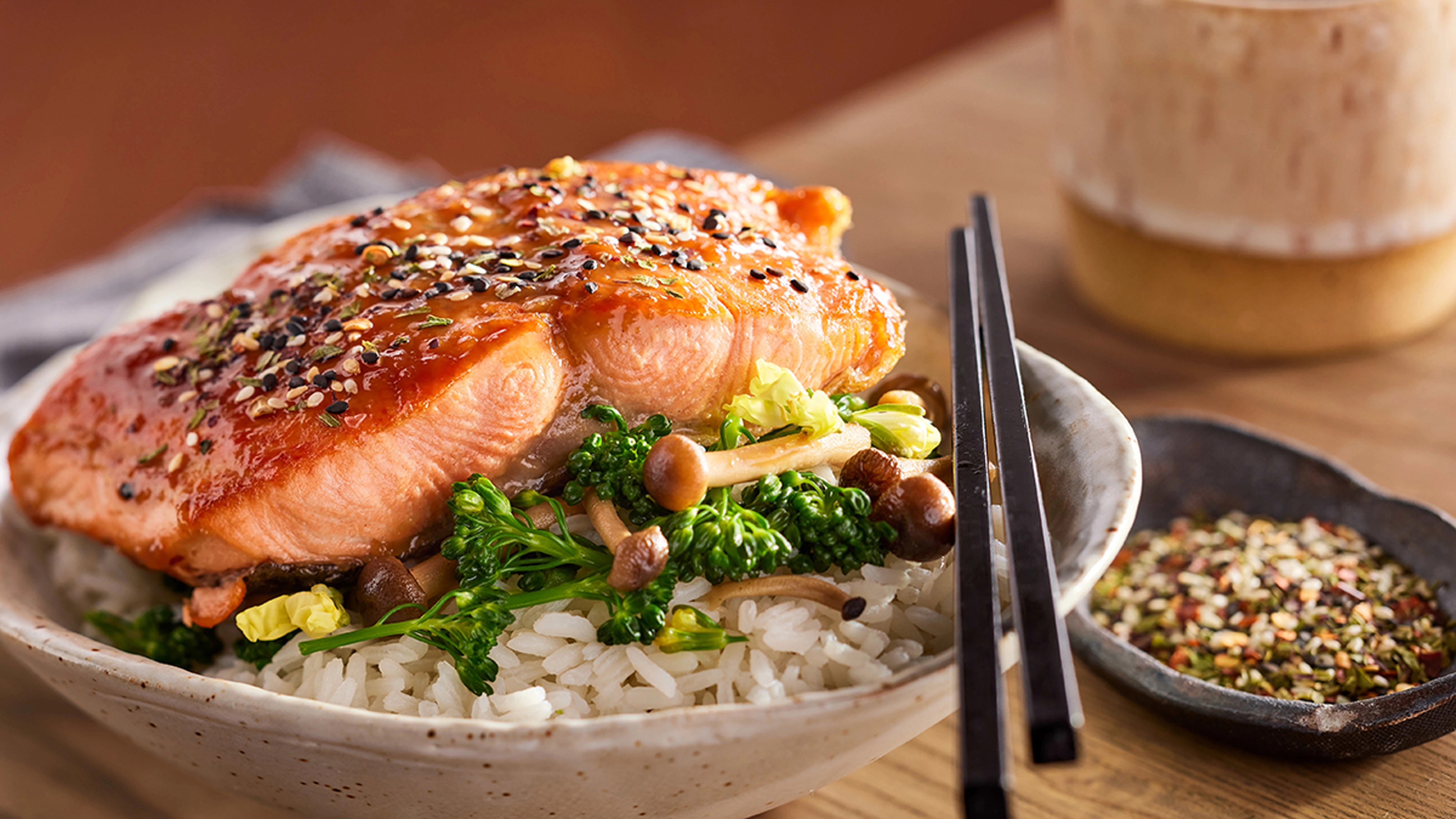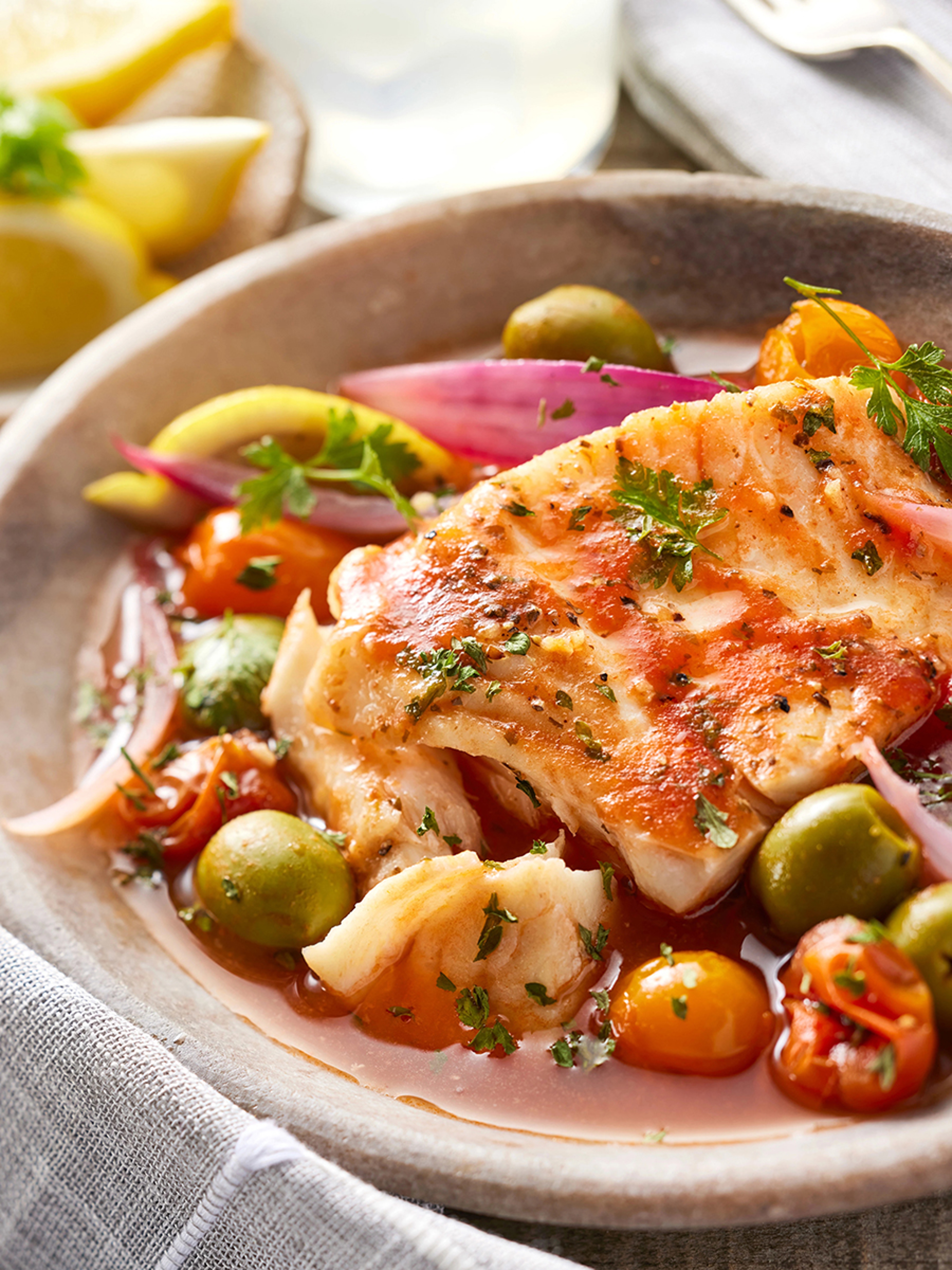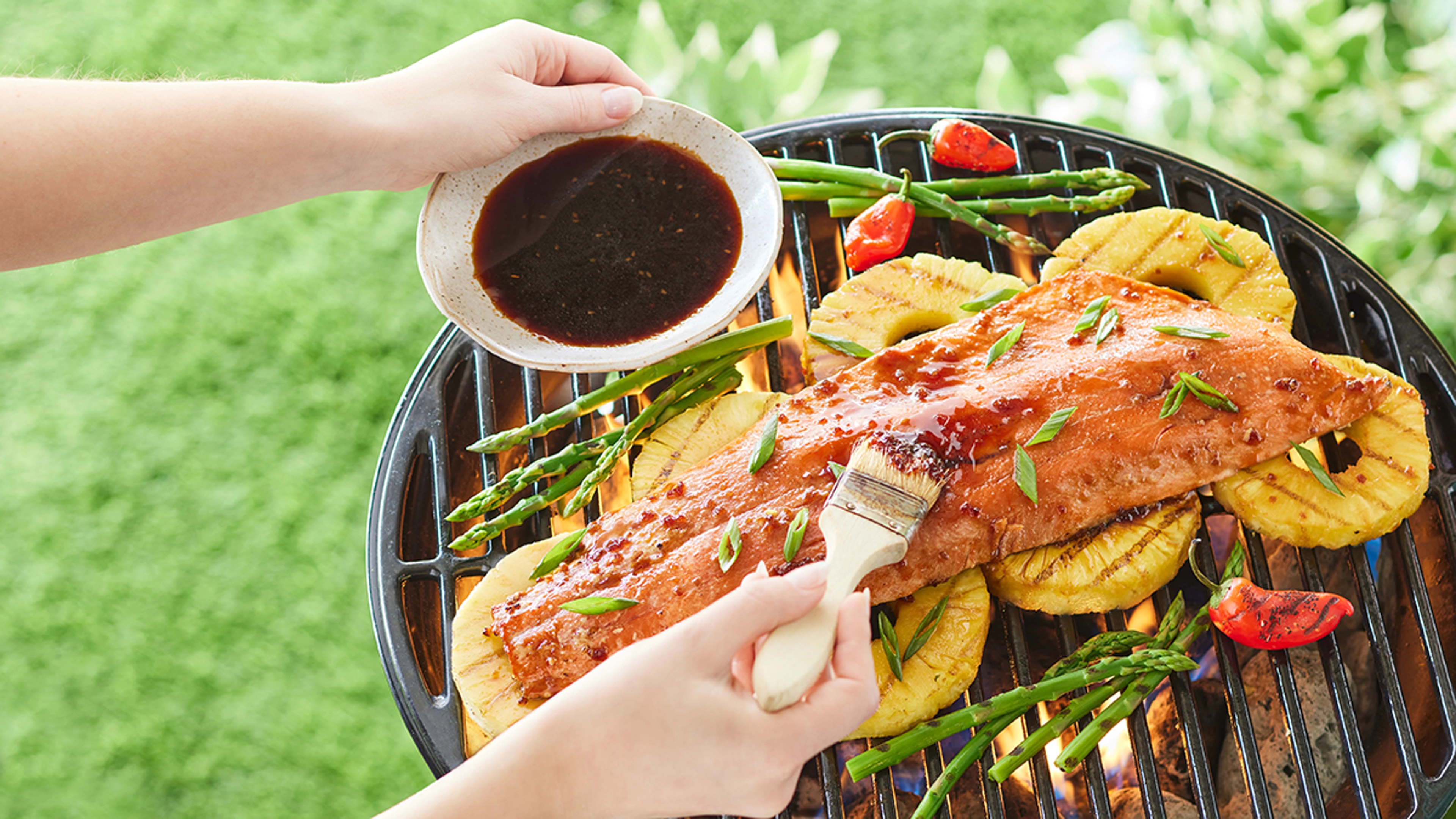How to Eat More Fish
One dietitian says olive oil, lemon juice, and garam masala is a good place to start.
Dec 03, 2024
Perhaps you'd like to eat more fish but don't know where to start — and your standbys somehow land on your table instead. You can change that, and it's easy. "You do not have to spend a fortune, plan for hours in the kitchen, or choke down something you dislike," says Virginia-based Jill Weisenberger, a registered dietician nutritionist and author of Prediabetes: A Complete Guide. "But you may have to be more creative, open your mind, and experiment with new flavors and techniques."
Why you should eat more fish
Besides tasting delicious, fish dishes are a way to feel better. Most of us know fish is good for us, but it's remarkable just how good it is for us.
Fish is an outstanding source of low-calorie protein that makes people feel full. Because of that, it helps control appetite while stimulating relatively small spikes in blood sugar. That's why, research suggests, fish helps us avoid metabolic syndrome — the collection of conditions that increase the risk of three evils: heart disease, type 2 diabetes, and stroke.

In a 25-year study that followed more than 5,000 volunteers ages 18 to 30 from four American cities, the people who ate fish at least five times a week had half the risk of metabolic syndrome compared to those who didn't eat fish at all. Eating fish also may help protect you from chronic kidney disease and help the elderly stay stronger, cutting the chance of damaging falls.
But that's not all.
Weisenberger points out the advantages of fish for brain health, possibly helping to limit cognitive decline with age.
What about omega-3s in fish?

Reams have been written about omega-3 fatty acids and how important they are for heart health, and that fish is a major source of those fats. Weisenberger also counts choline, iodine, selenium, and vitamin D as important nutrients in fish. Let's look at what they each may do.
In early research, choline appears to help the brain make use of the dietary omega-3 DHA — a key to brain function — and improves memory in mice.
READ MORE: Enough With Omega-3s. What Else Do Fish Offer?
Iodine is necessary for the body to synthesize thyroid hormones and is scarce in the diet, which is why so many countries began adding it to table salt.
Selenium is also scarce and essential to the thyroid.
Vitamin D plays a big role in maintaining bones, as it's needed to absorb calcium, the main mineral in our bones. Evidence suggests that a diet rich in fish protects bone more than meat-based meals. Vitamin D also seems to provide all-around protection in aging. In the DO-HEALTH multicenter clinical trial, nearly 2,160 men and women aged 70 and older are taking vitamin D (2,000 IU/day) and omega-3 fatty acids (1,000 mg/day), and instructed to exercise for 30 minutes three times a week. The goal of the trial is to "test interventions that are expected to promote healthy aging and longer life expectancy and that can be easily and safely implemented by older community-dwelling adults."
How much fish should I eat?
The American Heart Association recommends eating at least two 3-ounce (about three-fourths cup) servings of fish a week. The Dietary Guidelines for Americans ups that to at least 8 ounces a week for adults based on a 2,000-calorie diet. Women who are pregnant or breastfeeding need even more — up to 12 ounces — to give babies the benefits of fish for eye and brain development.
Does it matter what type of fish I eat?
There's no rule that says you should eat a certain kind of fish, Weisenberger explains. "Aim for a variety of seafood types to get the most nutrients," she advises. Everyone, but especially children and pregnant and breastfeeding mothers, might favor fish that are low in mercury, which happily include American favorites shrimp, canned tuna, and salmon.
Richer fish like anchovies, herring, mackerel, black cod, and sardines are especially high in those beautiful omega-3 fatty acids.
How you cook your fish matters
Fried anything is delicious, especially fish. Got an air fryer? Ordinary frying adds fat and can increase compounds called advanced glycation end products (AGEs), which may increase inflammation in the body and are linked to disease. Air fryers may limit that problem. Moist heat, such as steaming and poaching, clearly minimizes AGEs.
READ MORE: Our Favorite Salmon Recipes
You can also cook with an acid like lemon juice to inhibit the formation of AGEs if you choose to grill, bake, or broil, Weisenberger advises. "Tonight I'm making something super simple: cod fillets with olive oil, lemon juice, and garam masala. I also recently tried braising cod in a miso broth. It was quite good. Most often, I make salmon; it's remarkably versatile," she says.

How to work fish into your meal planning
You'll find that fish is a fun and easy food to cook with, and almost any fish dish is quick to make.
1. Be creative with canned, jarred, and frozen fish. All are versatile when you need to make a meal quickly. When Weisenberger gets home late, she puts frozen fish fillets in cold water, feeds her dog, and then changes her clothes. When she returns, her fish is defrosted.
Pull out the air fryer. Any can or jar of a high-quality fish (consider any from Portugal) turns salad into a meal. Add whole-grain toast or crackers on the side, or fruit, if you like sweet and savory meals. Put tuna salad in a microwaved baked potato.
2. Use anchovies or anchovy paste as a condiment to add umami richness to your tomato sauces. Mix anchovies with butter and spread it on almost anything to make it elegant.
3. Add fish to meals you or your family already enjoy. If you do Taco Tuesdays, make fish tacos one of the options. If you are a Spaghetti Sunday family, try canned clams in a red sauce. On barbecue days, offer well-sesaoned salmon. Another simple dish that's between the bread is broiled (with lemon) fish patties in a roll or bun — a fish sandwich doesn't have to be fried or mayonnaise-y.
4. Think morning and afternoon meals. Put smoked salmon in your eggs or spread a tuna pâté or anchovy butter on toast instead of cream cheese. Either also works for a lunch. Pick up sushi on your lunch break or for a 4 p.m. snack. Opt for with tuna, shrimp, or crab salad sandwiches, or a scoop of one of those salads on a pile of leafy greens.
5. Use flavors and spices you especially like but perhaps haven't learned to use at home. Love Asian food but never make it at home? Salmon teriyaki works.
Don't give up if you have a non-fish eater at your table. There are recipes even for people who don't like salmon. And you can always make the meal flexible, for example with more than one choice when assembling your own taco.









